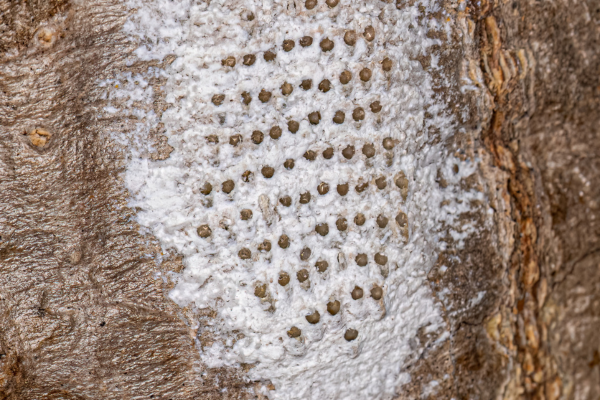Your cart is currently empty!

09 Jun Decoding The Signs Of Spongy Moth Damage
The Spongy Moth, a notorious disruptor of trees and forests, has mastered the art of devastation. Spongy Moths may seem like delicate creatures with their fluttery wings and fuzzy bodies, but these little critters can wreak havoc on your trees and shrubs. They are voracious eaters, consuming large amounts of foliage in a short period, and leaving behind ragged edges on leaves and damaged bark. If left unchecked, they can weaken trees and make them more susceptible to other pests and diseases. In this article, we will explore the signs of Spongy Moth damage that you should look out for, including defoliation, egg masses, bark damage, and frass. By being aware of these signs and acting quickly, you can help protect your trees and keep your garden thriving.
1. Look Out For The Defoliation Of Tree Leaves
One of the most visible signs of Spongy Moth damage is defoliation or the loss of leaves on trees. Spongy Moth caterpillars are voracious eaters and can consume large amounts of foliage in a short period. As they feed, they leave behind ragged edges on leaves and eventually strip entire branches bare. This can weaken trees and make them more susceptible to other pests and diseases.
If you notice that your trees are losing their leaves earlier than usual or that there are large patches without any leaves, it may be a sign of a Spongy Moth infestation. It’s important to act quickly to prevent further damage.
2. Check For Egg Masses
Another sign to look out for is the presence of egg masses on tree trunks and branches. These masses look like small, tan-coloured bumps and can contain hundreds of eggs each. If left unchecked, these eggs will hatch into hungry caterpillars that will begin feeding on nearby foliage.
It’s important to remove egg masses as soon as you spot them to prevent an infestation from taking hold. You can scrape them off with a putty knife or other flat tool and dispose of them in soapy water or by burning them.
3. Observe Signs Of Bark Damage
Spongy Moth caterpillars climb up and down trees to feed, leaving behind noticeable scrapes and damage on the bark. They also create silken threads as they move, which can be seen hanging from branches or wrapped around trunks.
If you notice bark damage or silken threads on your trees, it may be a sign that Spongy Moths are present in your area. Take action quickly before the infestation gets worse.
4. Keep An Eye Out For Frass
Frass, or excrement from Spongy Moth caterpillars, can accumulate on the ground beneath infested trees or on leaves directly beneath where they are feeding. It looks like small, dark pellets and can be a sign of heavy feeding.
If you notice frass on the ground or leaves beneath your trees, it’s important to take action before the infestation gets worse. You can use sticky bands around tree trunks to trap caterpillars as they crawl up and down or, even better, the V9 Tree Belt!
In conclusion, understanding the signs of Spongy Moth damage is crucial for the preservation of our trees and the ecosystems they inhabit. By being vigilant and taking swift action, we can mitigate the impact of Spongy Moth caterpillars, protect our trees from further harm, and preserve the delicate balance of our natural environment. Take proactive steps to protect your trees from the devastating impact of Spongy Moth infestations.
Invest in the V9 Tree Belt, available on the Environmental Factor website. This innovative solution acts as a barrier, preventing Spongy Moth caterpillars from climbing up trees and causing damage. By purchasing the V9 Tree Belt, you not only safeguard the health and beauty of your trees but also contribute to the preservation of our precious ecosystems. Visit the Environmental Factor website today and join the ranks of responsible tree guardians.
Together, let’s combat Spongy Moth infestations and nurture a greener, more resilient environment.


